All About Balsamic and Why this Vinegar Packs a Double-Punch!
It’s all about balsamic vinegar, a vinegar fine cooks know and love. Food researcher/writer, Andrew Wheeler, explains its history: “In 1046, the Holy Roman Emperor Henry III was given a silver bottle containing a celebrated vinegar while passing through a town on his way to his coronation.
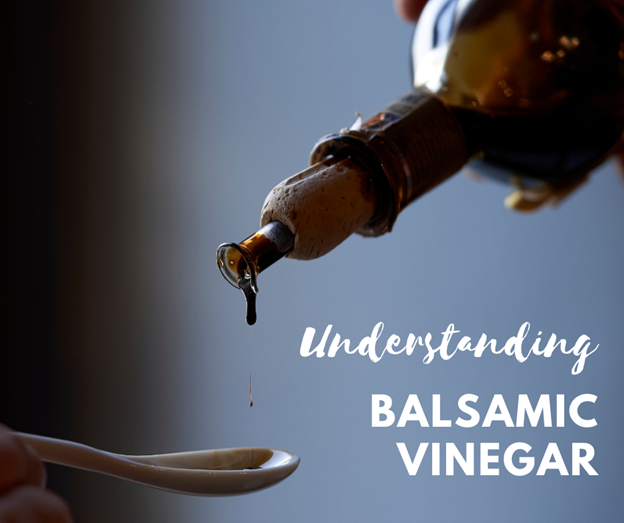
“The record of this visit is thought to be the first written reference to balsamic vinegar, a condiment once known only to those in the Emilia-Romagna region of what is now modern Italy, and produced only in the provinces of Reggio Emilia (where Henry III was visiting) and neighboring Modena.
“Today, balsamic vinegar is known to cooks around the world and available to shoppers everywhere. It can sell for as much as $200 an ounce, or as cheaply as three dollars for a 16 ounce bottle, depending on its production process.”
This vinegar’s first punch comes in its health benefits. Research shows balsamic vinegar helps:
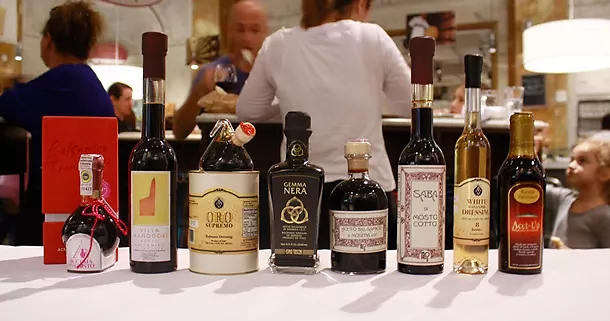
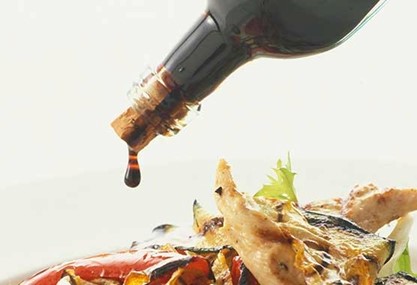
Traditional balsamic vinegar has a beautiful color and texture. It’s glossy, viscous, and dark brown, though it captures light beautifully. It moves like syrup, and has a velvety texture on the tongue.
Andrew Wheeler explains that beyond its beauty, balsamic’s second punch shows up in its bold, tart, and intricate flavor profile. It has a rich, complex sweetness that explodes in the mouth with notes of fig, molasses, cherry, chocolate, or prune. Traditional balsamic should pick up the flavors of the wood it matured in, and may have a slight smokiness. Traditional balsamic offers a mellow tartness rather than a strong acidity.
According to the experts at www.seriouseats.com and other sites I’ve studied, traditional balsamic is not a cooking ingredient — heating it will kill its distinctive bouquet — and it would be wasted as an ingredient in a salad dressing. Instead, use it where it can shine. Try putting a few drops on fresh berries, Parmigiano-Reggiano cheese, or creamy desserts like panna cotta, zabaglione, or vanilla ice cream.
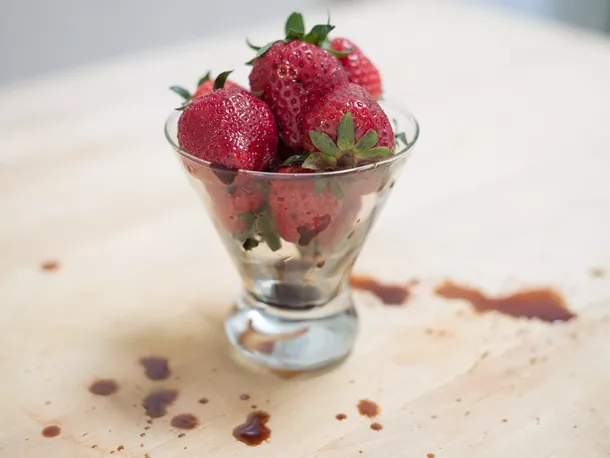
However, that said, traditional balsamic can be used at the END of the cooking. It's excellent drizzled over traditional veal scaloppine, a rich risotto, or the Italian stew bollito misto. It's also great over grilled meats and seafood. Add about a teaspoon per person just before serving to get the best of its flavor.
I’ll close with a tip from the www.seriouseats folks: when shopping for traditional balsamic vinegar, the most important thing to check is the ingredients list. If grape must is the only ingredient, that's a great sign. Grape must is freshly crushed fruit juice that contains the skins, seeds, and stems of the fruit.
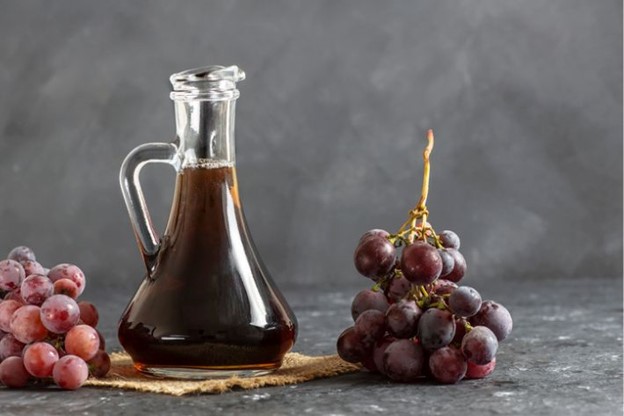
Some balsamics may contain a little wine vinegar to balance the acidity, but if wine vinegar is the first ingredient, you're looking at generic vinegar sweetened with balsamic must, not balsamic must that’s balanced with a little vinegar.
Buy the real thing and you’ll see very quickly why this amazing vinegar packs a double punch!

“The record of this visit is thought to be the first written reference to balsamic vinegar, a condiment once known only to those in the Emilia-Romagna region of what is now modern Italy, and produced only in the provinces of Reggio Emilia (where Henry III was visiting) and neighboring Modena.
“Today, balsamic vinegar is known to cooks around the world and available to shoppers everywhere. It can sell for as much as $200 an ounce, or as cheaply as three dollars for a 16 ounce bottle, depending on its production process.”
This vinegar’s first punch comes in its health benefits. Research shows balsamic vinegar helps:

- improve skin health due to its antimicrobial compounds, acetic acid, and antioxidants (when taken internally).
- reduce blood sugar—studies show it has a strong anti-glycemic impact.
- promote healthy digestion (due to its abundance of pro-biotic acetic acid) while also supporting overall immune function.
- lower cholesterol; its antioxidants help block any toxic cells that raise cholesterol levels.
- provide satiation and facilitate weight loss due its probiotics (which help you feel full for longer). Research shows people who add balsamic vinegar to their morning meal consume fewer calories throughout the day.
- heal wounds because of its antifungal, antiviral, and antibacterial properties.
- reduce hypertension; many studies show that if balsamic vinegar is combined with a low- to no-fat diet, hypertension is significantly mitigated over time.
- relieve nasal congestion by adding a few drops of vinegar to steaming water and breathe in the vapor.
- promote healthy blood circulation due to its high concentration of polyphenols (which help prevent platelets from building up in blood vessels).

Traditional balsamic vinegar has a beautiful color and texture. It’s glossy, viscous, and dark brown, though it captures light beautifully. It moves like syrup, and has a velvety texture on the tongue.
Andrew Wheeler explains that beyond its beauty, balsamic’s second punch shows up in its bold, tart, and intricate flavor profile. It has a rich, complex sweetness that explodes in the mouth with notes of fig, molasses, cherry, chocolate, or prune. Traditional balsamic should pick up the flavors of the wood it matured in, and may have a slight smokiness. Traditional balsamic offers a mellow tartness rather than a strong acidity.
According to the experts at www.seriouseats.com and other sites I’ve studied, traditional balsamic is not a cooking ingredient — heating it will kill its distinctive bouquet — and it would be wasted as an ingredient in a salad dressing. Instead, use it where it can shine. Try putting a few drops on fresh berries, Parmigiano-Reggiano cheese, or creamy desserts like panna cotta, zabaglione, or vanilla ice cream.

However, that said, traditional balsamic can be used at the END of the cooking. It's excellent drizzled over traditional veal scaloppine, a rich risotto, or the Italian stew bollito misto. It's also great over grilled meats and seafood. Add about a teaspoon per person just before serving to get the best of its flavor.
I’ll close with a tip from the www.seriouseats folks: when shopping for traditional balsamic vinegar, the most important thing to check is the ingredients list. If grape must is the only ingredient, that's a great sign. Grape must is freshly crushed fruit juice that contains the skins, seeds, and stems of the fruit.

Some balsamics may contain a little wine vinegar to balance the acidity, but if wine vinegar is the first ingredient, you're looking at generic vinegar sweetened with balsamic must, not balsamic must that’s balanced with a little vinegar.
Buy the real thing and you’ll see very quickly why this amazing vinegar packs a double punch!
 Alice Osborne
Alice Osborne
Weekly Newsletter Contributor since 2006
Email the author! alice@dvo.com
